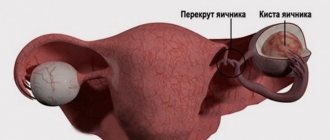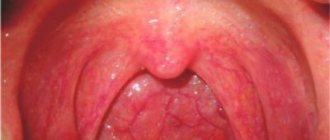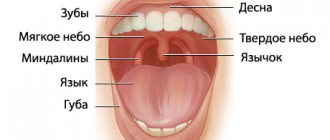Surgery to remove tonsils is performed for chronic tonsillitis, which is accompanied by frequently worsening sore throats. Against the background of frequently recurring tonsillitis, pyelonephritis, periarteritis nodosa, joint diseases, inflammation of the prostate gland, and infective endocarditis often develop. Due to the high risk of complications, experts often recommend surgical treatment of chronic tonsillitis. Often, only surgery can save the patient from constantly recurring relapses of sore throat, which greatly weaken the body’s defenses and reduce the patient’s quality of life.
Innovative technologies available to the specialists of the CONSTANTA Clinic in Yaroslavl make it possible to perform minimally invasive surgical interventions on the pharyngeal tonsils with high efficiency. We guarantee our patients high-quality services from experienced doctors who have many years of ENT practice behind them. Our Clinic is equipped with modern equipment, with which we carry out high-quality diagnostics and monitor the effectiveness of both conservative and surgical treatment of chronic tonsillitis and other diseases within the competence of otolaryngologists.
DIAGNOSIS OF CHRONIC TONSILLITIS
For frequently recurrent tonsillitis, consultation with an ENT specialist is necessary. The sooner you make an appointment with a doctor, the faster the specialist will provide qualified assistance. The doctor makes a diagnosis based on medical history, examination and research results. The main method for diagnosing chronic tonsillitis is pharyngoscopy. During the examination, the otolaryngologist identifies characteristic signs of the disease: swelling of the mucous membrane, fusion of the palatine arches with the tonsils, formation of adhesions, loose tissue, accumulation of pus in the lacunae, enlarged lymph nodes.
The toxic-allergic form of chronic tonsillitis is the most severe. Relapses occur several times a year and may be accompanied by infectious and inflammatory processes in internal organs and adjacent tissues, and the formation of abscesses. The patient experiences severe weakness, the body temperature may rise, and a sore throat causes severe anxiety and reduces the quality of life. The simple form of chronic tonsillitis occurs with more sparse symptoms: the patient is bothered by a sore throat, which intensifies when swallowing and chewing, weakness and decreased performance.
A common mistake made by patients with chronic tonsillitis is uncontrolled use of medications, including antibiotics. With antibacterial drugs you only slow down the spread of infection, but over time, pathogenic microorganisms adapt to the action of even the most powerful drugs, which lose their therapeutic effect. While the infectious focus of the tonsils is in the oropharynx, antibiotics will only provide temporary relief, but will not solve the problem.
Causes of chronic tonsillitis and constantly enlarged tonsils
Healthy tonsils are smooth, small in size, and comparable in color to the surrounding mucous membrane. There are no purulent plugs in the lumen of their lacunae, and the inflammatory reaction that occurs during respiratory infections quickly passes. Healthy tonsils do not cause discomfort and serve as a well-functioning barrier against infection.
With long-term or often recurrent inflammation of the tonsils, with their constant enlargement and pain, chronic tonsillitis is diagnosed. Various factors predispose to this:
- Inadequate treatment of acute tonsillitis (tonsillitis), which contributes to the persistence of infectious agents in the lacunae of the tonsils.
- Chronic inflammatory diseases of neighboring ENT organs.
- General decrease in immunity, immunodeficiency states of various origins. And this can be facilitated by hypovitaminosis, chronic debilitating infections of any location (including carious teeth), and taking certain medications (cytostatics, etc.).
- Frequent, unnecessary use of antibacterial agents.
- Anatomical features of the structure of the nasopharynx organs, contributing to congestion and chronic infections.
Chronic tonsillitis is diagnosed in almost 10% of adults. In fact, up to 35% of the population suffers from this disease, but many attach special importance to the condition of their tonsils or prefer self-medication.
TREATMENT OF CHRONIC TONSILLITIS: WHY OPERATION?
Medical tactics for chronic tonsillitis are selected based on numerous diagnostic data and examinations. Specialists weigh the pros and cons, assess the risks of complications and make professional forecasts for the future.
In most cases, tonsillectomy is performed when a toxic-allergic form of chronic tonsillitis develops, which, unlike the simple form of the disease, occurs with severe symptoms of intoxication, immunosuppression and a high risk of developing infectious complications.
Radical removal of tonsils for chronic tonsillitis is absolutely justified: if conservative treatment of tonsillitis is ineffective, only surgery can get rid of the source of chronic infection in the pharynx and prevent the spread of infection.
Experts identify more than 100 concomitant diseases that occur with long-term tonsillitis: psoriasis, nephritis, eczema, prostatitis, scleroderma, lupus erythematosus, rheumatism and other pathologies. You should not postpone the operation if the specialist insists on it. The tonsils lose their main protective functions and turn into a dangerous source of infection.
There are certain indications for surgical treatment of chronic tonsillitis, on the basis of which the doctor makes a decision on the need for surgery.
Indications for cauterization of tonsils
The surface of the tonsil has depressions - lacunae, they are needed to increase the area of the “working” surface. Allergens and microbial agents, when they enter the mucous membrane, cause an immune response from the body. Chronic inflammation leads to the formation of non-functional scar tissue, the lacunae narrow, and their drainage is impaired. All this leads to the accumulation of caseous plugs in the lacunae. If there are no indications for complete removal of the tonsils, then conservative treatment is carried out: washing the lacunae, physiotherapy. However, soon the lacunae are again “clogged” with plugs and the symptoms of the disease make themselves felt. To improve the functioning of the tonsil, it is recommended to carry out cauterization (ablation). The essence of this procedure is that the superficial layer of the tonsil is bloodlessly removed using a laser or radio wave. After this procedure, purulent plugs do not accumulate in the gaps, their size is reduced, the surface becomes smoother, and inflammation decreases. This way it is possible to achieve stable remission of the disease.
MAIN INDICATIONS FOR TONSIL REMOVAL IN CHRONIC TONSILLITIS:
- joint pain;
- pathological changes on the ECG;
- the development of serious complications that affect the heart, blood vessels, joints and internal organs: endocarditis, pericarditis, glomerulonephritis, pyelonephritis, vasculitis, rheumatism, arthritis;
- chronic intoxication, high risk of developing sepsis;
- development of peritonsillar abscess;
- heart rhythm disturbances, heart pain.
The main goals of surgical treatment are to remove the source of chronic infection, eliminate the symptoms of tonsillitis, prevent the development of infectious complications and stop intoxication of the body. With a highly qualified surgeon, tonsillectomy allows you to successfully perform all these tasks and relieve the patient from constant discomfort.
The operation to remove tonsils should be carried out only within the walls of a medical institution that has all the necessary technical equipment. Our Clinic employs qualified specialists, well trained and experienced, who have many years of practical experience behind them, allowing them to carry out surgical treatment of chronic tonsillitis with high efficiency.
Tonsillectomy has not only indications, but also contraindications. They must be taken into account when choosing treatment tactics. Experts identify absolute and relative contraindications to tonsil removal.
Absolute contraindications include:
- severe heart failure;
- serious impairment of kidney function;
- endocrine pathologies, in particular - decompensated type of diabetes mellitus;
- bleeding disorders, which may be complicated by bleeding or blood clots;
- oncological diseases;
- active form of tuberculosis.
- exacerbation of any infectious and inflammatory processes;
- menstruation in women;
- pregnancy;
- increase in body temperature.
Relative contraindications to tonsillectomy:
Advantages of intratonsillar laser destruction
See also Treatment of ENT diseases Treatment of sore throat in adults Treatment of viral sore throat in children Cough in a child
Intratonsillar destruction has significant differences from partial tonsillectomy:
- With laser destruction, only foci of inflammation are specifically destroyed, while the functionally active tissue of the tonsils remains intact. Laser tonsillectomy involves the inevitable loss of part of the tonsil with a decrease in its immune activity.
- Intratonsillar destruction does not lead to damage to the surface epithelium, which plays an important role in the process of antigen recognition. The laser removal method is accompanied by the formation of a scar.
- Intratonsillar action activates its own regeneration processes and anti-inflammatory mechanisms in neighboring areas of the tonsil.
- With intratonsillar laser destruction, deep sanitation (cleansing) of the entire tonsil occurs, and with laser tonsillectomy, only the surgical area is disinfected.
This treatment procedure leads to the complete elimination of foci of inflammation while preserving the tonsils, has a beneficial effect on the functioning of the immune system, and has a preventive effect.
FEATURES OF PREPARATION FOR TONSILLECTOMY
Before surgery, patients undergo a comprehensive examination. The list of studies includes:
- general blood analysis;
- general urine analysis;
- blood test for APTT, fibrinogen, PTI;
- Blood for RW, HIV, HBs Ag (hepatitis B), HCV (hepatitis C);
- glucose, total bilirubin, blood creatinine;
- fluorogram;
- ECG with interpretation.
5 days before surgery, specialists prescribe medications for patients undergoing surgical removal of the tonsils to reduce the risk of bleeding. Immediately on the day of surgery, you are prohibited from eating and drinking.
You must carefully follow your healthcare provider's recommendations. This will minimize the risk of complications, both during surgery and in the postoperative period.
If, during a comprehensive examination, specialized specialists identify somatic pathology, the operation may have to be postponed. The doctor will prescribe appropriate drug treatment, based on the results of which a decision will be made about the possibility of performing a tonsillectomy.
AT WHAT AGE IS SURGICAL TREATMENT OF CHRONIC TONSILLITIS MOST OFTEN PERFORMED?
The operation can be performed at any age, in accordance with the existing indications for surgery. Due to anatomical features, children are recommended to undergo tonsillotomy - partial removal (cutting) of the tonsils or conservative therapy. Adults undergo tonsillectomy - complete removal of hypertrophied tonsils. The minimally invasive nature of surgical treatment of tonsillitis allows for surgical intervention with minimal tissue trauma, without significant blood loss and with a short rehabilitation period.
Tonsillectomy is one of the most common operations in the modern practice of ENT specialists. Despite this, patients must be monitored in the early postoperative period so that qualified Clinic staff can monitor the patient’s health status and, in case of signs of deterioration or complications, provide the necessary medical care.
Consequences of tonsil removal
One of the most unpleasant consequences is weakening of the immune system throughout the body. As mentioned above, the tonsils are a natural protective barrier that blocks the passage of many bacteria and viruses into the lungs. After their removal, infectious diseases, flu and colds may occur more often. The same new coronavirus will have easier access to your respiratory tract.
The rehabilitation itself, even with the most painless surgical methods, can become an unpleasant surprise: swelling in the bronchi, soreness, crusting and the sensation of a foreign body in the throat. No doctor can answer for sure how long this will last - everything is too individual.
Please do not resort to surgical intervention unless absolutely necessary and clearly prescribed by a doctor. The tonsils are an important organ in our body, and its presence protects us from many unpleasant diseases. Contact only trusted ENT specialists and start treatment as early as possible.
Take care of your health!
ANESTHESIA FOR TONSILLECTOMY AND TONSILLOTOMY
Tonsil removal surgery can be performed under general anesthesia or local anesthesia. The decision to use one or another method of anesthesia is made by the doctor based on the medical history, examination results and examination of the patient. Local anesthesia today is rarely used in early childhood, since due to the mental characteristics of a child under 8-10 years old, he cannot calmly accept the operation. Therefore, we recommend that tonsillectomy be performed in childhood using short-term general anesthesia.
At the CONSTANTA Clinic, tonsillectomy is performed under video microscopy control. During surgery, an anesthesiologist is present in the operating room and fully monitors the patient's condition. Modern drugs that we use for general anesthesia are not accompanied by the development of complications characteristic of drugs used earlier. The patient quickly comes to his senses and recovers under the strict control of competent Clinic specialists.
What type of pain relief is best to choose?
Tonsillectomy was previously considered an operation that did not require more severe pain relief than local anesthetics (infiltrative). It should be noted that a feature of operations performed on the ENT organs, even minor ones, is pronounced subjective discomfort in the patient - emotionally, any interventions in the head and neck area are much more difficult to tolerate than interventions in the torso and limbs. It is the fear of surgery that stops many patients. The solution to this problem is general anesthesia, which became possible thanks to the active development of anesthesiology and has recently been widely used during this intervention. Also, the possibility of general anesthesia solves the issue of performing surgery in patients who have a history of allergic reactions to local anesthetics.
GENERAL ANESTHESIA FOR TONSILLECTOMY
Removal of tonsils under general anesthesia is used mainly in childhood. Before the operation, sedatives are prescribed. The anesthetic is administered intravenously, which allows the patient to quickly fall asleep. After this, the doctor begins to remove the tonsils. If during the use of local anesthesia the patient sits and is conscious, then during surgery under general anesthesia the patient is in the operating room in a lying position with his head tilted back.
The operation takes place quickly, under the supervision of experienced specialists. Tonsils are removed using a raspator, a tool that provides low-traumatic removal of hypertrophied tissue while preserving the functional characteristics of healthy mucosa. The vessels coagulate, so bleeding does not occur. The doctor carefully examines the tissue after removing the tonsils to assess the condition of the bed and blood vessels. It is important to perform the tonsillectomy as cleanly as possible, leaving no part of the tonsils behind. This will provide a guarantee against relapse of the disease in the future.
Why are tonsils needed?
The tonsils, together with other tonsils (paired tubal, lingual, pharyngeal) and small lymphoid follicles of the pharynx form a key functionally active structure: the Pirogov-Waldeyer pharyngeal lymphadenoid ring.
All tonsils are formed by special lymphoepithelial tissue and are peripheral organs of the immune system. Their main role is protective, but they also have other functions.
What is the lymphadenoid ring responsible for:
- Participation in lymphopoiesis - the formation and maturation of lymphocytes (immune blood cells). This occurs in the follicles in the thickness of the tonsils. Subsequently, lymphocytes migrate to the general lymphatic system or are used locally.
- Immunocompetent (immunological) role. All lymphadenoid structures are capable of recognizing antigens entering through the nose or mouth and producing appropriate antibodies to them. This is provided by lymphocytes.
- In childhood, the tonsils also have a certain influence on the functioning of the endocrine organs, although they themselves do not secrete any hormones. Their functional connection with the thymus, pituitary gland, adrenal cortex, and thyroid gland has been proven.
The tonsils are functionally active almost throughout life. Currently, removal of tonsils in children and adults is carried out only according to indications, preferring organ-sparing operations.
FEATURES OF THE POSTOPERATIVE PERIOD
Despite the fact that tonsillectomy is one of the most common operations in modern otolaryngology, the patient’s condition must be monitored by qualified specialists in the postoperative period. The patient is transferred to the ward on a gurney or in a sitting position, depending on the type of anesthesia used. For quick recovery, it is recommended to use dry ice every two hours for 5-15 minutes. This prevents the appearance of swelling and inflammation.
Feeling is restored a few days after the operation. During the first day, you should not swallow saliva - you need to keep your mouth slightly open so that it flows by gravity. In the early postoperative period, you should not talk. If minor sore throat occurs, the doctor will prescribe a pain reliever. He also recommends the use of non-steroidal anti-inflammatory drugs, which, in addition to the analgesic effect, prevent the development of an inflammatory reaction. In general, patients tolerate the operation easily and can return to their usual activities almost immediately.
During the first days after surgery, you can eat mostly soft, pureed foods. Avoid hot drinks. According to indications, specialists can prescribe medications to prevent bleeding. Antibacterial drugs are used to prevent the development of infectious complications.
For two weeks after surgery, physical activity is limited. It is forbidden to visit the bathhouse or actively engage in sports. You should also not actively gargle for the first days after tonsillectomy.
Cauterization methods
| Method | What is used | Advantages | Flaws |
| Cryotherapy | A liquid nitrogen. Under the influence of liquid nitrogen, the tissue is greatly cooled. Ice crystals form inside the cells, destroying the cell wall. | Bloodless, painless method. Well tolerated by elderly patients. | To achieve a lasting effect, a course of procedures is required. |
| Laser ablation | CO2 laser, holminium or fiber optic laser. The effect is based on the evaporation of liquid (coagulation) of tissue due to laser heating. | Bloodless, painless method. | Heating of the tissues surrounding the tonsil, the formation of a layer of dead tissue, which disappears within 5-7 days. Within 2-3 days after the procedure, discomfort in the throat, similar to a cold. |
| Radio wave ablation | Alternating high-frequency current (radiosurgery devices Surgitron, Curis). The effect is achieved by heating the tissue and evaporating liquid from it. | Bloodless, painless method, good wound healing, gentle effect on surrounding tissues. The procedure is carried out once, and can be repeated after several years. | The formation of a layer of dead tissue, which disappears within 5-7 days; the next day after the procedure, discomfort in the throat, similar to a cold. |
CONSEQUENCES OF TONSILLECTOMY
Tonsil removal surgery is successful in most cases. A huge role is given to the professionalism of the operating doctor, anesthesiologist and other specialists who monitor the patient’s well-being. If you contact a competent otolaryngologist, who has the necessary technical equipment, and follow the doctor’s recommendations before surgery and in the postoperative period, then the risk of complications is minimized.
When the first signs of malaise and deterioration in health appear, you should consult your doctor. Since the pharyngeal tonsils have a rich vascular network, after tonsillectomy there remains a risk of bleeding. Therefore, if the doctor discovers prerequisites for blood loss, the operation is postponed or additional medications are prescribed to prevent bleeding during surgery or in the first days after it.
The first week after surgery is considered the most dangerous. During this period, tissue healing and rejection of fibrin formed at the site of the removed tonsil occurs. Do not take any action on your own. Contact qualified specialists of the Clinic who will provide the necessary amount of medical care and prevent the development of serious complications.
After tonsillectomy, cases of relapse of the disease cannot be excluded. But the high professionalism of our Clinic’s surgeons and the use of innovative technology make it possible to minimize any risks and ensure maximum infectious safety for our patients.







